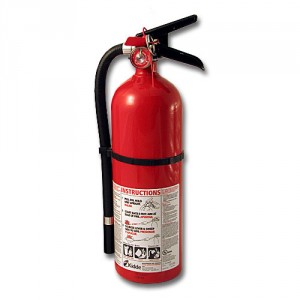 Everyone knows that it is necessary to have fire extinguishers on hand at all workplaces. But do you have the correct type or types of fire extinguishers on hand for the flammable materials you have? No single fire extinguisher work across all types of materials, so having one extinguisher type may not be enough for your workplace.
Everyone knows that it is necessary to have fire extinguishers on hand at all workplaces. But do you have the correct type or types of fire extinguishers on hand for the flammable materials you have? No single fire extinguisher work across all types of materials, so having one extinguisher type may not be enough for your workplace.
All fire extinguishers are labelled with a certain class label, that indicates what they can or cannot be used on. Here are the types of flammable materials, and the types of fire extinguishers that are safe for use:
Wood, Paper, and Plastic
Foam, wet chemical, water, and Powder ABE fire extinguishers – usually labelled as Class A units – are best for use on these materials. Carbon dioxide extinguishers can also be used, but only in enclosed spaces – they will be ineffective in open air and are generally only good at extinguishing smaller fires.
Flammable and Combustible Liquids
Foam and Powder ABE/Powder BE extinguishers work on these materials, particularly the foam, as it creates a blanket that smothers the fire. Attempting to use water-based fire extinguishers can actually create greater problems, as they may cause heated steam or simply push the flammable liquid around, spreading the fire instead of extinguishing it. Wet chemical fire extinguishers will have much of the same issue – the chemical they contain is only effective on fat and oil fires, and the wet base will simply push the flammable liquid around. Carbon dioxide can be used, but again, they are ineffective outside and on large fires.
Flammable Gases
These are exceptionally dangerous, and can only be attacked with the Powder ABE or Power BE type extinguishers. The only way to combat these types of fires is to break the chemical reactions that are happening and to smother the flames. The Powder extinguishers are the only ones capable of this, all other types will be ineffective.
Electrical Equipment
Carbon dioxide is the best type of fire extinguisher for a fire in energized or non-energized electrical equipment. Powder extinguishers can also be used, but they leave quite a mess to clean up. Carbon dioxide extinguishers cover and remove the oxygen from the fire, eliminating one of the three elements needed for a fire. Water, wet chemical, and foam extinguishers should never be used on electrical fires – if the electric has been shut off, they can cause damage to the equipment. Even worse, if the electric has not been shut off, these extinguishers can conduct the electricity back to the user, leading to harmful or even fatal electrical shock.
Cooking Oils and Fats
Wet chemical fire extinguishers are perfect for these fires – the chemical interacts with the oils and fats and, essentially, turns them into a solid, soap-like substance that is non-flammable. This removes the fuel for the fire, extinguishing it quickly. Powder can be used as well, and while foam can be used in a pinch, it is generally inadvisable. Water will only make the situation worse, and carbon dioxide will simply be ineffective.
Metals
Metal fires are rare, so many people are unsure of how to address them. Substances such as magnesium and potassium can combust, creating a fire that can be difficult to deal with. Powder ABE and BE extinguishers are the only types that should be used. These may be labelled as dry powder, which is fine, but if they are labelled as “dry chemical,” you will want to avoid them, as the chemicals may interact with the metal to create a bigger fire. Additionally, due to the hydrogen content in water extinguishers, a fire with a metal as a fuel may actually grow larger.
By having the correct types of fire extinguishers on hand, and a staff that is trained in their proper usage, you can prevent injury and property damage. Make sure to keep your employees up to date with fire safety, and make sure they know that, if in doubt, it is better to go find someone who knows what extinguisher to use and how to attack the fire than to risk doing it incorrectly.
